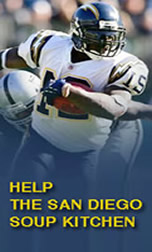|
|
Make certain the equipment is the proper size and adjusted to each athlete. If proper protective equipment isn’t available for a child, give the child another responsibility: scorekeeping, providing water to players, or working with the coach. Plan to try to get the proper equipment donated or purchased before the next practice so everyone can participate. Beware of broken glass, rusty nails, used syringes, rocks and other items that would increase injury if a child fell or slid on them. Watch weather forecasts; have a set of guidelines for postponing or calling practice or a game. Pay attention to days with Code Red or Code Orange.
If at all possible have an adult trained in first aid techniques on hand. At least have an adult with a charged mobile phone. Provide the adult supervisor with a notebook of emergency phone numbers for parents or guardians of all athletes. Carry a well-stocked first aid kit.
Those who break the rules should be warned or penalized depending on the severity of the infraction, the danger to other players and the rules of the game being played and the age and skills level of the participants. By all means, prevent bullying of athletes by adults or children. Young athletes need to focus on the game, not on their shame, embarrassment or humiliation. Overachieving has resulted in severe injury and even death. Ensure children drink plenty of liquids while participating in athletic activities. This is especially important in high heat, high humidity or high altitudes or with athletes who are just beginning their training/play and aren’t toned. Many youth sports associations provide training for adult coaches of their sport. Adults learn the rules, what to expect from the age range they’ll be coaching and techniques for managing disputes among athletes or their adult cheering squad. Anticipate children’s needs based on where they are in the developmental process. Ages birth to five years old is a period of developing strength and coordination sequentially from head to heel. Ages five to 11 strength and coordination grow, as do attention spans, which are short in the beginning and lengthen. It’s a time to build fundamental skills. Early adolescence, 11-14 years old, have to learn about cause and effect relationships, reach puberty—the dividing line for severity of injury. Late adolescence, 15 to 21 years, are testing the boundaries of independence and still need guidance to help them develop personal safety and judgement. By understanding the developmental stages of the children it serves, the organization can anticipate and develop strategies to manage the risks created by the normal maturation and development of the children it serves. If it helps to understand why, consider the sport of wrestling where body size, weight and skills are taken into account. Only then are opponents matched against each other. This safety precaution protects the participants, the organization and makes for a more even contest. |
|
..Feeling sick and need to look over the counter medicines? |
|
| ......................OVER THE COUNTER COLD MEDICINES.................. | |
BY THE AMERICAN ACADEMY OF PEDIATRICS Over-the-counter (OTC) medications can be bought at your local drug store or grocery store without a doctor's order. This does not mean that OTCs are harmless. Like prescription medications, OTCs can be very dangerous to a child if taken incorrectly. You need to read and understand the instructions before giving OTCs to your child. Continue |
|
TEL- 619-427-4111 Email - Health@infooption.com Salud+HealthInfo is for information and educational purposes only. You should not rely on this information as a substitute for personal medical attention, diagnosis or hands-on treatment. If you are concerned abut your health or that of a child, please consult your family's physician or health provider immediately and do not try to diagnose yourself. Copyright © 2001-2006 Info Option Network |
|
Bienvenido a la primer revista dedicada al cuidado de la salud
 info
info
The first, the best & the only English & Spanish Magazine in San Diego, California
.. |
||||||
|
||||||
|
||||||
|
||||||
|
||||||
ONE VOTE IS ONE CAN OF SOUP!!! Campbell Soup has a promotion for each city with an NFL franchise. Go to the Campbell website below and vote for the Chargers (or whatever team you support). For each vote the Chargers get, Campbell Soup will donate a can of soup to a San Diego Soup Kitchen. This is a great cause with the holidays coming up. Please pass the links on to help feed our community this winter. Thank you! Visit the Chargers site |
||||||
|
||||||
|
